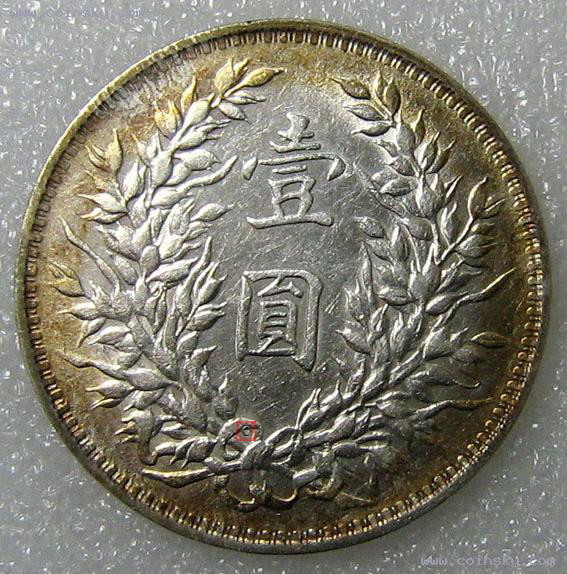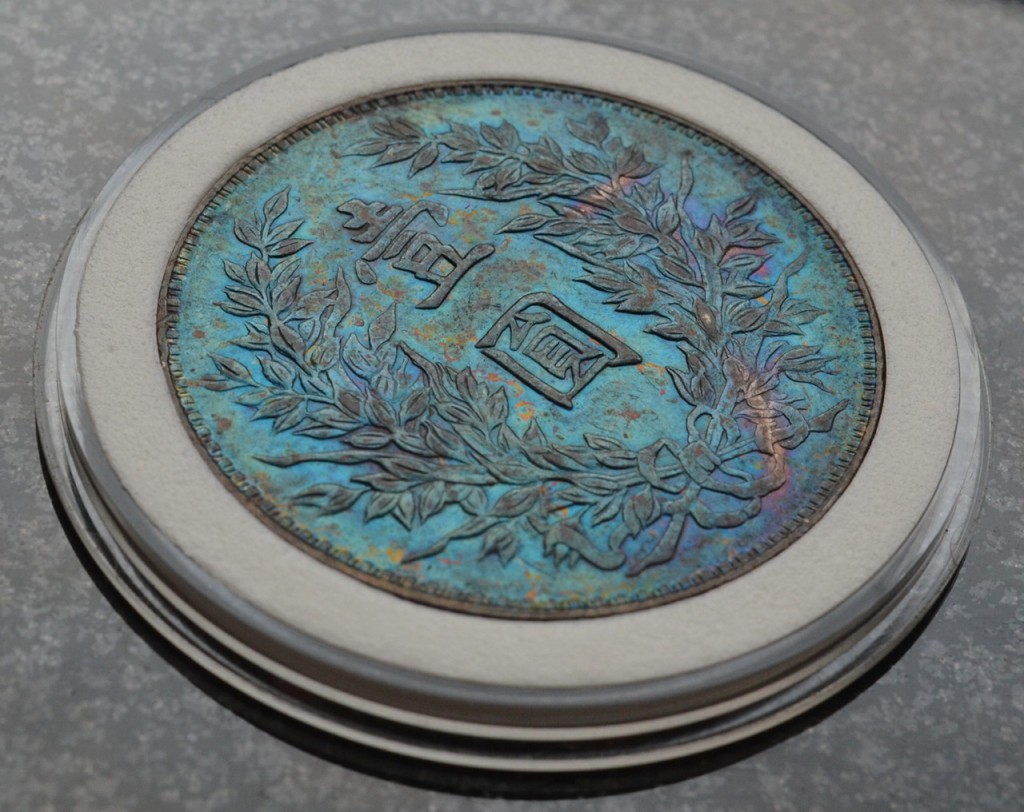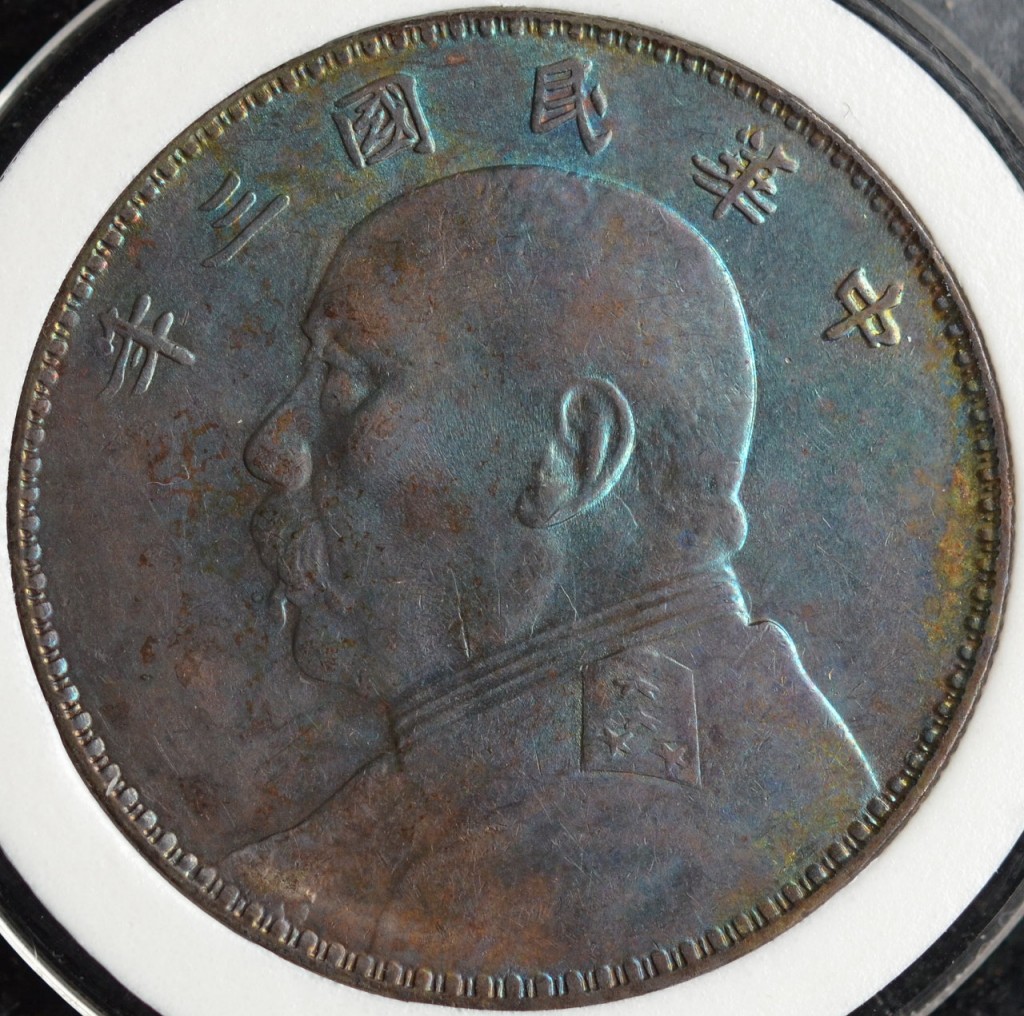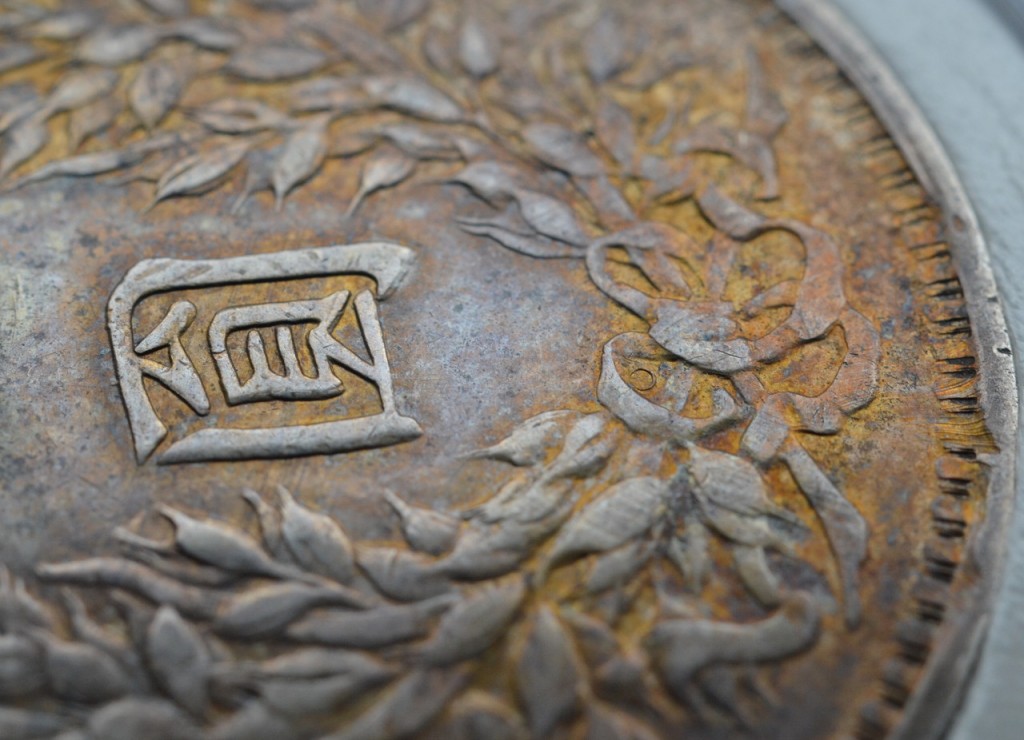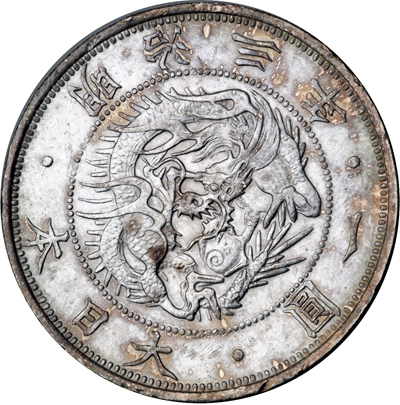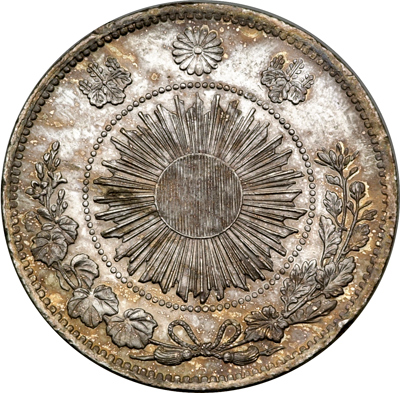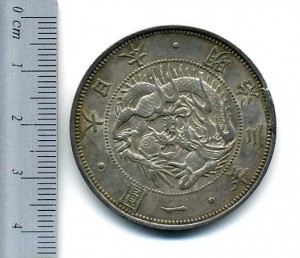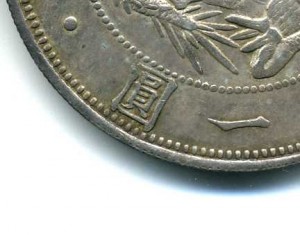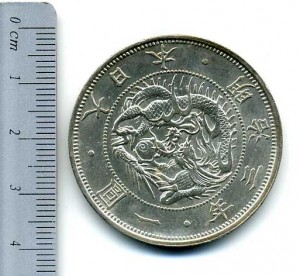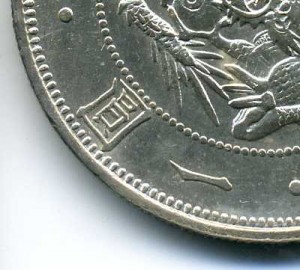Die Variations: the 1914 Yuan Shi Kai Dollar (3rd Year of the Republic of China)
The Yuan Shi Kai dollar (or “fatman dollar“) is a very common coin. Liang Shi Yi (梁士诒), the former mint master of the Central Mint in Tianjin, remembered that for the first 9 months of production, 300,000 silver dollars were minted every day. Provincial mints were issued official dies from the central governement, and the new dollars were consistently up to standards.
This standardisation, allied to favourable circumstances, allowed the new coinage to successfully replace the dragon dollars and foreign trade dollars still circulating at the time. However, with years passing, several interesting die variations of the original 1914 dollar appeared and found their way into circulation. The most popular of these types are the “O” mint mark (O版) and the triangular yuan (三角圆) varieties. There has been much speculation about the origin of these special coins, which remains incertain.
A popular theory is that the “O” mint mark (O版) coins were minted in Shenyang (沈阳) in 1951 under the supervision of the People’s Bank of China (中国人民银行), for the exclusive use of the population of the southern provinces and ethnic minorities, who didn’t trust the Renminbi (人民币) currency. Popular lore also says that the triangular yuan coins would have been minted in 1949 to pay workers building roads in Tibet.
While there is some truth in these theories, they comport some flaws. In 1949, the new government banned the private possession of gold and silver. Older silver coins were to be exchanged at the bank for the new currency, the Yuan Renminbi still in use nowadays. In 1951 the People’s Bank of China had already withdrawn enough silver dollars from circulation that it did not need to mint any new one; it could have simply used those already in its possession.
What about the supposed location of their production? Shenyang was taken by the People’s Liberation Army on November 2, 1948. On November 3, the North-Eastern Communist Bank of China (中共东北银行) took control of the mint, and on November 8, the Shenyang branch of the North-Eastern Provincial Bank (东北银行) was established. The mint was immediately tasked to start producing silver dollars, in order to avoid a currency shortage in the province. The old 1914 dies of the original Yuan Shi Kai dollars were dusted off and put back to use.
In the records of the Shenyang mint (沈阳造币厂志), page 169, it is noted that the mint had to repair the old dies, “correcting a character” (改正一字) and “fixing the epaulette” (改修肩章) of the Yuan Shi Kai portrait. This description matches closely the changes observed on the triangular yuan variety: the 圎 (Yuan) character has been modified, and indeed the epaulette on the shoulder of Yuan Shi Kai is sharply struck. However, there is no mention of adding the “O” mint mark in the records of the mint. The existence of the “O” mint mark + triangular yuan (O版三角圆) variety would thus imply that the “O” mark existed prior to 1949, and the type “O” dies were simply modified along the normal dies.
A supporting evidence is that the original edition of “Illustrated Catalog of Chinese Coins” by Eduard Kann (耿愛德), published in 1953, included the “O” mint mark type (Kann 648) but not the triangle yuan. He compiled this catalog for the 47 years he stayed in China, before he “had to leave China in a hurry” during the takeover by Mao Ze Dong in 1949. The 1954 edition of the book was amended to include, amongst other additions, the triangular yuan variety. This shows the coins bearing the “O” mint mark were in circulation well before 1949, and that the triangular yuan coins were made after 1949, as confirmed by the records of the Shenyang mint.
If we dig further into the past, we can see from the archives of the mint (沈阳造币厂大事记) that it first minted Yuan Shi Kai dollars (1915) and Hong Xian commemorative silver coins (1916) under the supervision of the Central Mint. However, the records indicate that the mint issued new coins on 3 occurrences after that. On July 26, 1919, Zhang Zuo Lin (张作霖 aka Chang Tso-lin, warlord of Manchuria) renamed the mint as “Fengtien Arsenal” (奉天军械厂制造科) and minted both Yuan Shi Kai dollars and imperial copper cash coins. On January 13, 1921 and June 15, 1926, Zhang Zuo Lin ordered again some Yuan Shi Kai dollars to be minted at Shenyang to redress the finances of his provinces, strained by the successive wars against the Zhili clique and the Guominjun.
It is quite likely that the “O” mint mark was added to the old official dies in June 1926. Manchuria economy was in decline, and Zhang Zuo Lin had just appointed a new civil governor in March whose sole function was to supply his army with large amounts of money. The Fengtien dollar, which was quickly losing value against the Japanese gold yen, was debased. It would have made lot of sense to add a distinctive mark to the newly issued, debased coins to easily distinguish them from older issues which were up to standard.
Even if the popular theories were not too wrong about the place and time of minting of these varieties, we see now that these had actually nothing to do with Southern provinces or ethnic minorities. Both were produced in Shenyang primarily as emergency currency to try and shore up the ailing economy of Manchuria in difficult times: the O版 in 1926, as Zhang Zuo Lin was bleeding the province dry to conquer Beijing, and the 三角圆 in 1949, to start rebuilding the economy at the end of the Civil War.
There is a dragon on this coin, and it is covered in Chinese characters, therefore several readers assumed it was a Chinese coin… This is actually a Japanese coin. Subsequent strikes of this type of coin include an English face value of “One Yen“, which helps avoiding this mistake, but the coin above is a one year type, with no English legend at all, making its proper identification somewhat more tricky if you are unable to read Chinese characters. While the focus of this blog is clearly Chinese coins, I thought it could be interesting to write an article about this particular dragon dollar.
The strike of western-style round coins began earlier in Japan than in China: the coin above was minted in 1870, the year of the currency reform edicted by the Emperor Meiji (also known by his personal name, Mutsuhito). Seeking to modernise the country and bring it to western standards of the time, the Emperor Meiji replaced the ancient and complicated monetary system by a bi-metallic, western-style currency backed by gold and silver to facilitate trade with foreign countries. Due to the round shape of the dollar sized coins, the new currency was called “Yen“, using the same traditional Chinese character 圆 (Yuan) than in China. The symbol was later simplified as 元 in China, and 円 in Japan, which are now respectively used as the Yuan and Yen currencies symbols.
On the obverse, the coins depicts the Japanese dragon holding the pearl of wisdom. One can note that while the Chinese imperial dragon has always 5 claws, this Japanese dragon has only 3 toes. In Japan as in China, the Emperor was said to be the descendant of dragons. In China, the story goes that dragons originated in China and lost toes as they went farther and farther, until they could not walk anymore. This is why the Korean dragon has 4 claws and the Japanese dragon 3 toes. But there is a long time rivalry between China and Japan, and in Japan people say that dragons actually came from Japan, and grew more claws as they went further away…
The reverse is actually more helpful for identification purpose: it shows the characteristic rising sun symbol and the imperial seal of Japan, a 16 petals chrysantemium flower.
This dragon dollar is known in western catalogues as Y5, type 1 or type 2. But what is the difference between these “types”? This information is surprisingly difficult to find online. There is actually 3 main versions of the 1870 Japanese yen, which only differ in the way the 圆 character was written. The most common is the type 1, as shown at the beginning of this article.
The type 2, also called “正貝円” in Japan (正贝元 in China), is much scarcer. The difference resides solely in a tiny detail of the 圆 character: on the common version, the left stroke at the bottom of the 貝 part of the character is too short, incomplete. On the type 2, the stroke is longer, complete – that is why this type is called “Correct 貝 Yen”.
There is also a third version, very rare and expensive, called “欠貝円” in Japan (“Defective 貝 Yen”). The 圆 character on this die variation is lacking one stroke, effectively creating a yawning gap in the middle of the character.
There is more die variations (手変わり in Japanese) of the early Yen coins, but they are minor and have less impact on the price than the 3 shown above.
The Meiji 3 silver yen is one of the scarcest Japanese coins, however it is still much cheaper than a lot of Chinese coins. You can buy a mint state type 1 1870 Yen for about $1000 USD at current prices.
